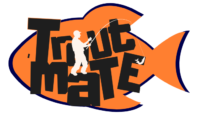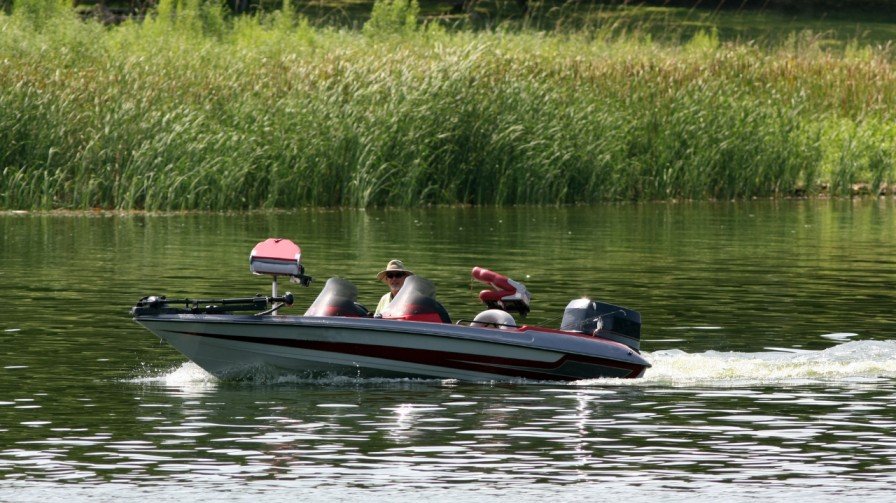Striped bass eat a variety of food when fishing. Their diet changes based on their habitat and the season.
Fishing for striped bass can be both thrilling and challenging. To increase your chances of success, it’s vital to understand what they eat. Striped bass are known for their diverse diet, which includes smaller fish, crustaceans, and even some types of invertebrates.
Knowing their preferred food sources can help you choose the right bait and lures. This knowledge not only makes your fishing experience more rewarding but also helps in conserving these fascinating creatures. So, let’s dive into the diet of striped bass and discover the key to a successful fishing adventure.
Introduction To Striped Bass Diet
Striped bass, known for their powerful fight and delicious taste, are a popular target for anglers. To catch striped bass effectively, understanding their diet is crucial. Knowing what striped bass eat helps you choose the right bait and improves your chances of success.
Importance Of Knowing Their Diet
Knowing the diet of striped bass is essential for several reasons:
- Effective bait selection: Using the food they naturally eat increases your chances of a catch.
- Location targeting: Striped bass are often found where their prey is abundant.
- Seasonal patterns: Their diet changes with the seasons, affecting their behavior and location.
Striped bass are opportunistic feeders. They eat a variety of prey, including fish, crustaceans, and invertebrates.
Seasonal Variations In Diet
The diet of striped bass changes with the seasons. Here is a breakdown of their diet throughout the year:
| Season | Diet |
|---|---|
| Spring | Herring, shad, and smelt |
| Summer | Crustaceans, small fish, and squid |
| Fall | Menhaden, eels, and crabs |
| Winter | Smaller fish and crustaceans |
Understanding these seasonal variations helps you adapt your fishing strategy. For example, using herring as bait in spring can be highly effective.
Natural Prey Of Striped Bass
Striped bass are voracious predators. They hunt a wide range of prey. Understanding their diet helps anglers choose the right bait. Let’s explore what striped bass eat in the wild.
Common Baitfish
Baitfish form a large part of the striped bass diet. They are easy to catch and provide a good source of nutrition. Popular baitfish include:
- Shad: These are a favorite among striped bass. They are abundant and easy to find.
- Herring: Another common prey. They move in schools, making them an easy target.
- Menhaden: Also known as bunker fish. They are rich in oils, which attract striped bass.
- Anchovies: Small but plentiful. They are a quick snack for hungry bass.
Crustaceans And Invertebrates
Striped bass also enjoy crustaceans and invertebrates. These provide essential nutrients. Some of their favorites include:
- Crabs: Blue crabs and green crabs are common in their diet. Striped bass crack their shells to get to the meat.
- Shrimp: They are easy to catch and full of protein. Striped bass often hunt them in shallow waters.
- Worms: Bloodworms and sandworms are irresistible to striped bass. They are a natural part of the striped bass diet.
Striped bass are adaptable predators. They eat a variety of prey depending on availability. Knowing what they eat can help you choose the best bait. Happy fishing!
Best Live Baits For Striped Bass
When fishing for striped bass, choosing the right bait is crucial. Live baits can often attract more strikes compared to artificial lures. Below are some of the best live baits to use for striped bass fishing.
Using Eels
Eels are a top choice for catching striped bass. Their natural movement and scent make them irresistible to bass. Here are some tips for using eels effectively:
- Hook placement: Hook the eel through the jaw and out through an eye. This keeps the eel alive longer.
- Handling: Eels can be slippery. Use a rag or towel for a better grip.
- Presentation: Cast the eel and let it swim naturally. This mimics the behavior of prey.
Utilizing Live Shad
Live shad are another excellent bait for striped bass. Their size and movement attract big bass. Follow these tips for using live shad:
- Hook placement: Hook the shad through the nose or back. This allows for natural swimming.
- Keeping shad alive: Use an aerated livewell to keep shad lively. Fresh bait catches more fish.
- Fishing techniques: Try slow trolling or drifting. These methods work well with live shad.
Using live bait like eels and shad can increase your chances of catching striped bass. Always ensure your bait is lively and presented naturally.
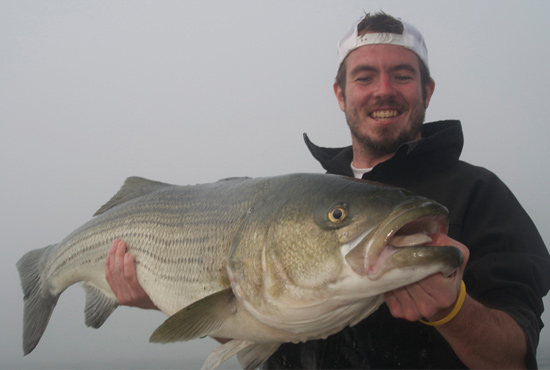
Credit: www.gameandfishmag.com
Effective Artificial Lures
Fishing for striped bass can be thrilling. Using the right artificial lures can make a big difference. These lures mimic the food that striped bass eat. Let’s explore some effective options.
Topwater Lures
Topwater lures are exciting to use. They stay on the water’s surface. This imitates struggling baitfish. Striped bass find it irresistible.
Popular topwater lures include:
- Popper lures
- Walking baits
- Prop baits
These lures create splashes and noise. This attracts the attention of striped bass. They strike with force. Fishing with topwater lures is both effective and fun.
Soft Plastic Baits
Soft plastic baits are versatile. They can be used in various conditions. These baits mimic worms, eels, and small fish.
Common soft plastic baits are:
- Swimbaits
- Grubs
- Soft plastic jerkbaits
These lures are flexible and lifelike. They move naturally in the water. This tricks striped bass into biting. Anglers often use soft plastic baits with jig heads.
| Lure Type | Example | Best Condition |
|---|---|---|
| Topwater Lures | Popper | Calm Water |
| Soft Plastic Baits | Swimbait | Deep Water |
Using these artificial lures increases your chances. Experiment with both types. Find what works best for you. Happy fishing!
Choosing The Right Bait For Seasons
Choosing the right bait for striped bass can vary by season. Each season affects the feeding habits of striped bass. Understanding these seasonal changes helps in selecting the best bait.
Spring And Summer Choices
During spring and summer, striped bass are more active. The warmer water increases their metabolism. This means they feed more frequently. Here are some effective bait options:
- Live Bait: Use live eels, shad, or herring. These are natural prey for striped bass.
- Artificial Lures: Topwater lures and crankbaits work well. These mimic the movement of prey.
- Cut Bait: Fresh cut bait like bunker or mackerel is also effective.
In spring, striped bass move to shallow waters to spawn. This makes shore fishing more productive. In summer, they prefer deeper, cooler waters. Adjust your fishing spots accordingly.
Fall And Winter Preferences
Fall and winter bring cooler water temperatures. Striped bass slow down and feed less often. Their diet changes too. Here are some bait options for these colder months:
- Live Bait: Smaller live baits like bloodworms and sandworms are effective.
- Jigs: Use jigs with soft plastic trailers. These mimic small fish or worms.
- Cut Bait: Fresh clams or squid can attract striped bass in colder water.
In fall, striped bass migrate to find food. Look for them near river mouths and estuaries. In winter, they stay in deeper waters. Use heavier gear to reach these depths.
Understanding the seasonal patterns of striped bass helps in choosing the right bait. Adjust your bait and techniques with the seasons for a successful fishing trip.
Matching The Hatch
When fishing for striped bass, understanding their diet is crucial. This concept, known as Matching the Hatch, involves selecting bait that mimics the local prey. By doing so, anglers can improve their chances of success.
Understanding Local Forage
Striped bass eat a variety of prey in their habitat. Their diet includes:
- Small fish
- Crustaceans
- Worms
- Insects
Identifying the local forage is the first step. In different regions, striped bass may prefer different prey. For example, in coastal waters, they might feed on herring and mackerel. In rivers, they might prefer shad or crayfish.
Local bait shops and experienced anglers can provide valuable insights. They can inform you about the most common prey in the area. Observing the water and looking for baitfish schools can also offer clues.
Adapting Bait To Environment
Once you understand the local forage, adapt your bait accordingly. Use live bait whenever possible. Live bait closely mimics the natural movement of prey, making it more attractive to striped bass.
Here is a table to help you choose the right bait:
| Environment | Common Prey | Suggested Bait |
|---|---|---|
| Coastal Waters | Herring, Mackerel | Live Herring, Mackerel |
| Rivers | Shad, Crayfish | Live Shad, Crayfish |
| Lakes | Sunfish, Perch | Live Sunfish, Perch |
In situations where live bait is not available, consider using artificial lures. Choose lures that match the size, color, and movement of local prey. Common types of artificial lures include:
- Soft plastics
- Jigs
- Crankbaits
By adapting your bait to the environment, you can increase your chances of catching striped bass. Remember, the goal is to make your bait look as natural as possible.
Techniques For Presenting Bait
When fishing for striped bass, presenting the bait in a natural way is crucial. The right technique can make a big difference. Below are some effective methods to present bait to striped bass.
Drift Fishing
Drift fishing involves letting the current move the bait. This method is great for covering large areas. Striped bass are more likely to bite moving bait.
Use a slip sinker rig. This allows the bait to move naturally with the current. You can use live bait like eels, shad, or bunker.
Here’s a simple drift fishing rig:
| Component | Description |
|---|---|
| Slip Sinker | Allows free movement of the bait |
| Swivel | Prevents line twist |
| Leader | Connects the hook to the main line |
| Hook | Holds the bait |
Casting And Retrieving
Casting and retrieving is another effective technique. It mimics the movement of prey. Striped bass find this irresistible.
Use a lure or artificial bait. Cast it out and retrieve it slowly. Vary your speed and retrieve pattern. This keeps the fish interested.
Here are some popular lures for striped bass:
- Swimbaits
- Jerkbaits
- Soft plastics
- Topwater plugs
Experiment with different lures and retrieves. Striped bass can be unpredictable. Changing tactics often helps.
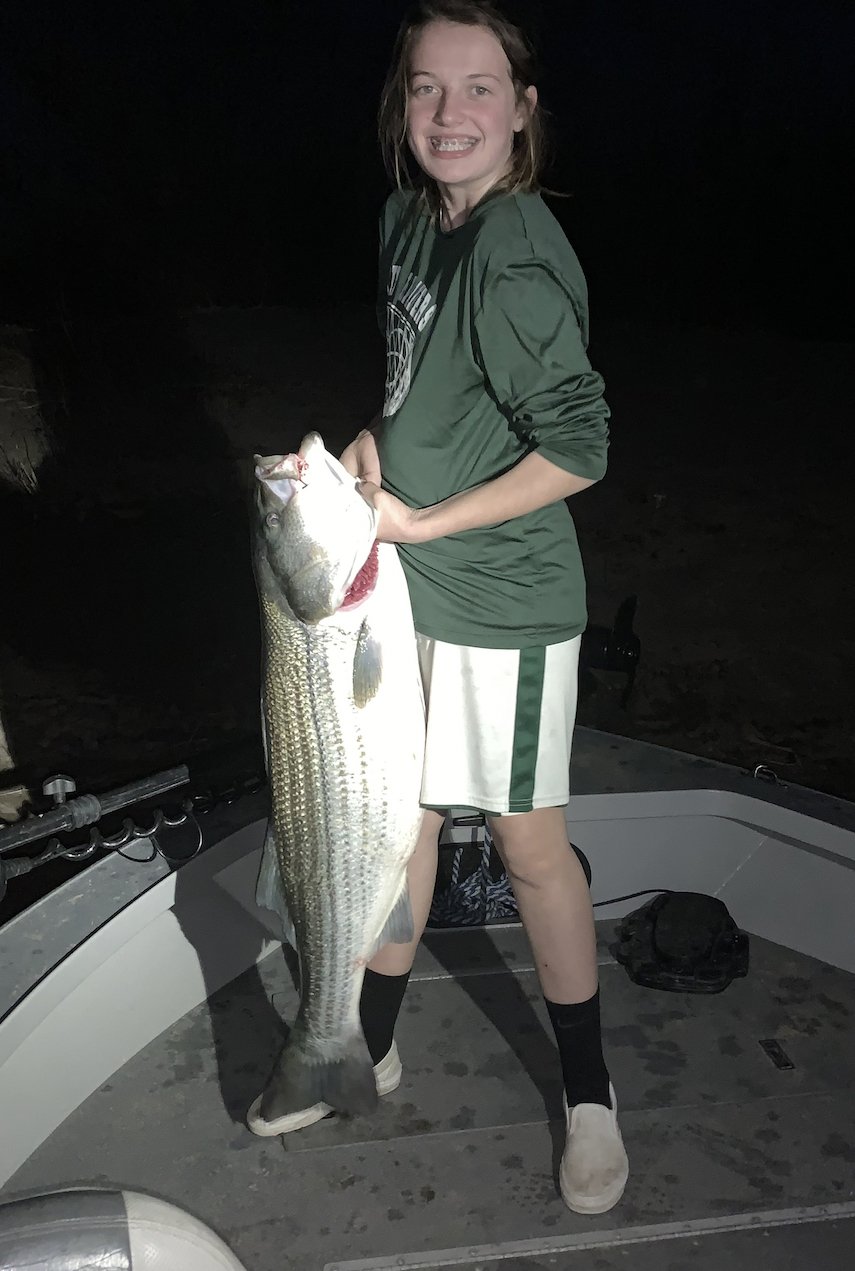
Credit: www.salmonsacriver.com
Tips For Successful Striped Bass Fishing
Fishing for striped bass can be a thrilling experience. Knowing what they eat and how to catch them can improve your success. Here are some tips to help you reel in more striped bass.
Reading Water Conditions
Water conditions play a key role in striped bass fishing. Clear water can make striped bass more cautious. In murky water, they rely on their sense of smell.
Look for areas with strong currents. Striped bass often hunt where the water moves quickly. Rocks and underwater structures are also prime spots. These areas attract smaller fish, which are striped bass prey.
Check the water temperature. Striped bass prefer cooler waters, between 55°F and 68°F. Use a thermometer to find the right spots.
Timing Your Fishing Trips
The time of day can greatly impact your success. Early morning and late evening are ideal times. During these periods, striped bass are more active and feed closer to the surface.
The season also matters. Spring and fall are the best seasons for striped bass fishing. In these seasons, they are more active and easier to catch.
Consider the tide when planning your trip. Striped bass are more likely to bite during incoming or outgoing tides. Check tide charts before heading out.
| Factors | Ideal Conditions |
|---|---|
| Water Clarity | Murky |
| Water Temperature | 55°F – 68°F |
| Time of Day | Early Morning, Late Evening |
| Season | Spring, Fall |
| Tide | Incoming, Outgoing |
By understanding these factors, you can improve your chances of catching striped bass. Happy fishing!
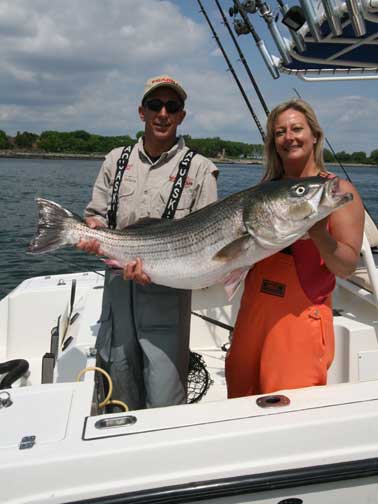
Credit: neangling.com
Frequently Asked Questions
What Do Striped Bass Eat In Freshwater?
Striped bass in freshwater primarily eat baitfish like shad and herring. They also consume crustaceans, insects, and small fish.
Are Striped Bass Carnivorous?
Yes, striped bass are carnivorous. They primarily feed on smaller fish, crustaceans, and other aquatic organisms.
Do Striped Bass Eat At Night?
Yes, striped bass are known to feed at night. They often hunt under low-light conditions for baitfish.
What Is The Best Bait For Striped Bass?
Live bait such as shad and herring are best for striped bass. Artificial lures like swimbaits and jigs also work well.
Conclusion
Striped bass have diverse diets, enhancing fishing strategies. They eat smaller fish, crustaceans, and insects. Knowing this helps in bait selection. Match your bait to their natural food. Patience and observation are key. Use this knowledge to improve your fishing experience.
Happy fishing!
